Introduction #
Red Rising is a board game that thrusts you into a high-stakes conflict for influence within a society of 14 color-coded castes in a dystopian future. Based on the book series by Pierce Brown, the game shares its name with the book series and puts you at the head of a house vying for dominance. However, Red Rising isn’t just another rummy-like card game; it’s a careful dance of hand management and timing, where each card can serve as a stepping stone—or an obstacle—in your path to victory. If you crave a game where adapting to the ever-changing landscape of characters is key, then keep reading, because this review is for you.
For this review, I first tackled Red Rising with no prior knowledge of the book series, allowing me to see whether it stands on its own. Later, I read the first novel and replayed the game, which revealed how understanding the lore can elevate the experience. Whether you’re a newcomer or a longtime fan, here’s what you can expect.
Overview #
Red Rising is a card-driven, hand-management game set in a dystopian future where players lead a house vying for power. The goal is to manipulate your hand of character cards by deploying them, using their abilities, and acquiring new ones to achieve the highest score. The game ends when certain thresholds are met by any combination of players, or when one player reaches two of these conditions: 7+ Helium tokens, 7+ Influence tokens on the Institute, or a position of 7 or greater on the Fleet Track.
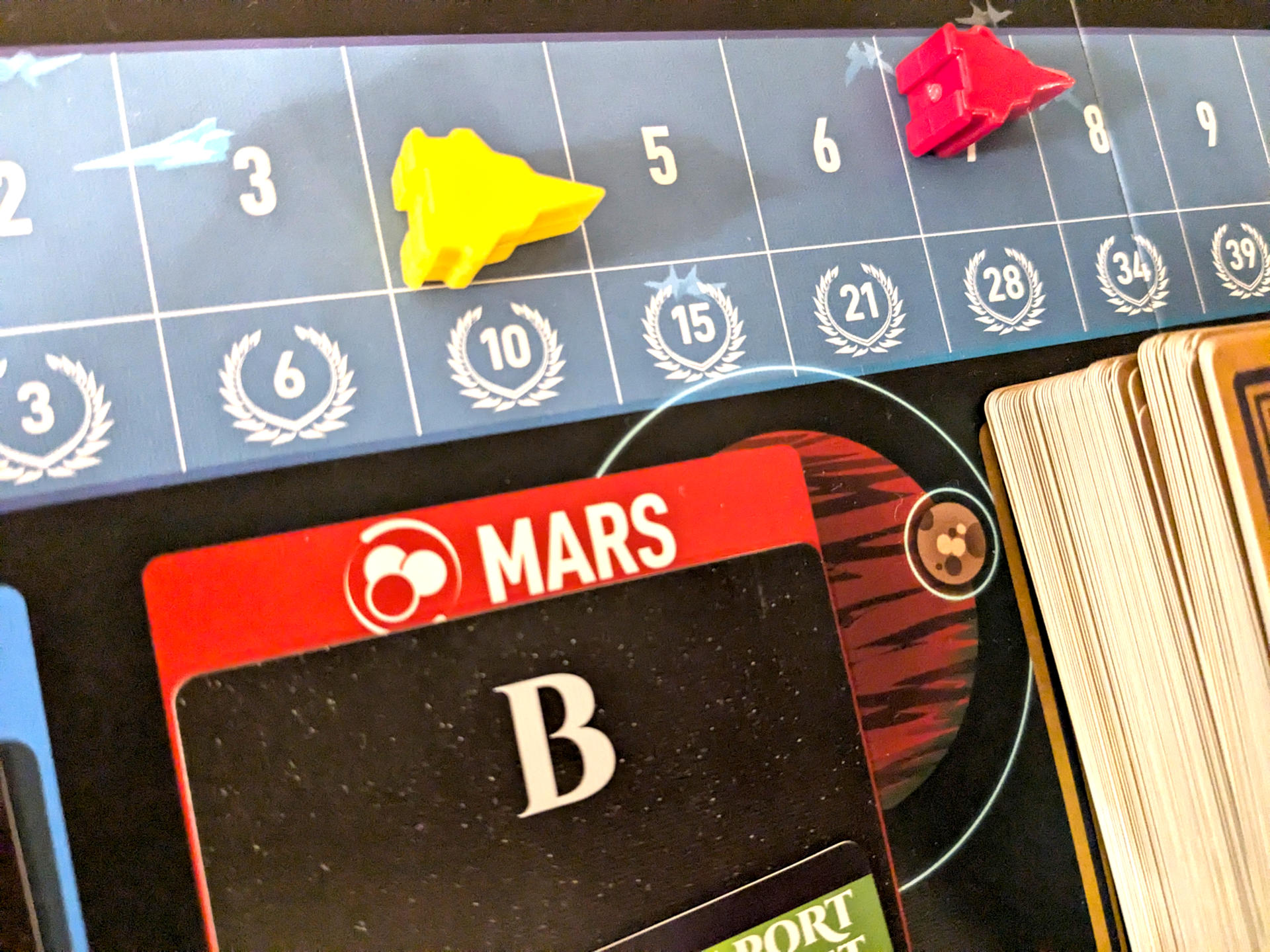
On your turn, you choose between Lead or Scout actions. If you Lead, you deploy a character card from your hand face up on one of four locations: Jupiter, Mars, Luna, or the Institute. Deploying a character card may trigger its special ability. After deploying, you either gain the top card from another location and gain its location bonus, or you draw from the deck and roll the Rising die for its bonus. If you Scout, you simply reveal the top card of the deck and place it on any location, gaining that location’s bonus.
Each of the four locations provides a unique bonus when you gain a card from it.
- Jupiter lets you advance on the Fleet Track.
- Mars grants you Helium tokens.
- Luna gives you the Sovereign token to activate your house’s powerful ability.
- The Institute allows you to place Influence tokens.
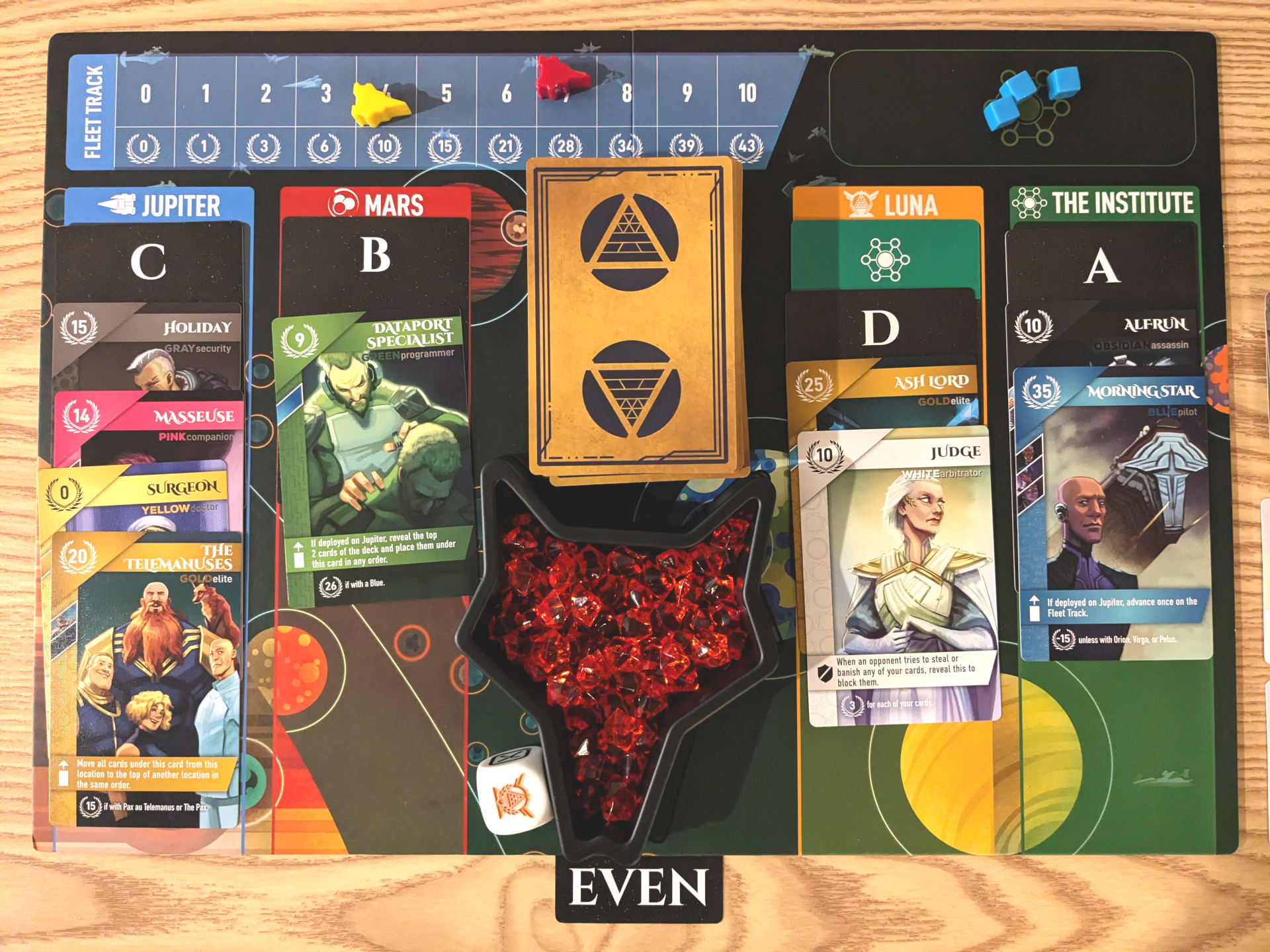
Character cards have core values, end-game bonus points, deploy abilities, block abilities, and end-of-game abilities. All of these are tools at your disposal to develop your unique strategy and assemble the best hand of character cards to score the most points. Scoring is determined by the core and bonus points of your cards, as well as points from Helium, Sovereignty, Fleet Track position, and Influence. The player with the highest score at the end of the game wins.
Gameplay #
I was initially drawn to Red Rising because it’s inspired by Fantasy Realms, one of my all-time favorite games. I love how Fantasy Realms took the familiar mechanics of rummy and went wild with combos and big point swings. With Red Rising, the biggest selling point for me was the official solo mode. For someone who often ends up playing board games alone, I was really looking forward to playing a game like Fantasy Realms as a solo game. But let’s start with the fundamental gameplay itself and why it resonates so much with me.
Like Fantasy Realms, Red Rising uses open drafting to create tension. You can see exactly which card is available at each location. This means you can make cunning plans to take a key card that’s integral to your set. However, the second you do, you’re revealing your intentions. The next player might respond by taking a card you need or pivoting to a new strategy that blocks yours. I love how one card can fit into multiple sets, or how different combos might emerge from seemingly oddball combinations. The open tableau keeps everyone engaged, as each reveal can shift your long-term plans in an instant.
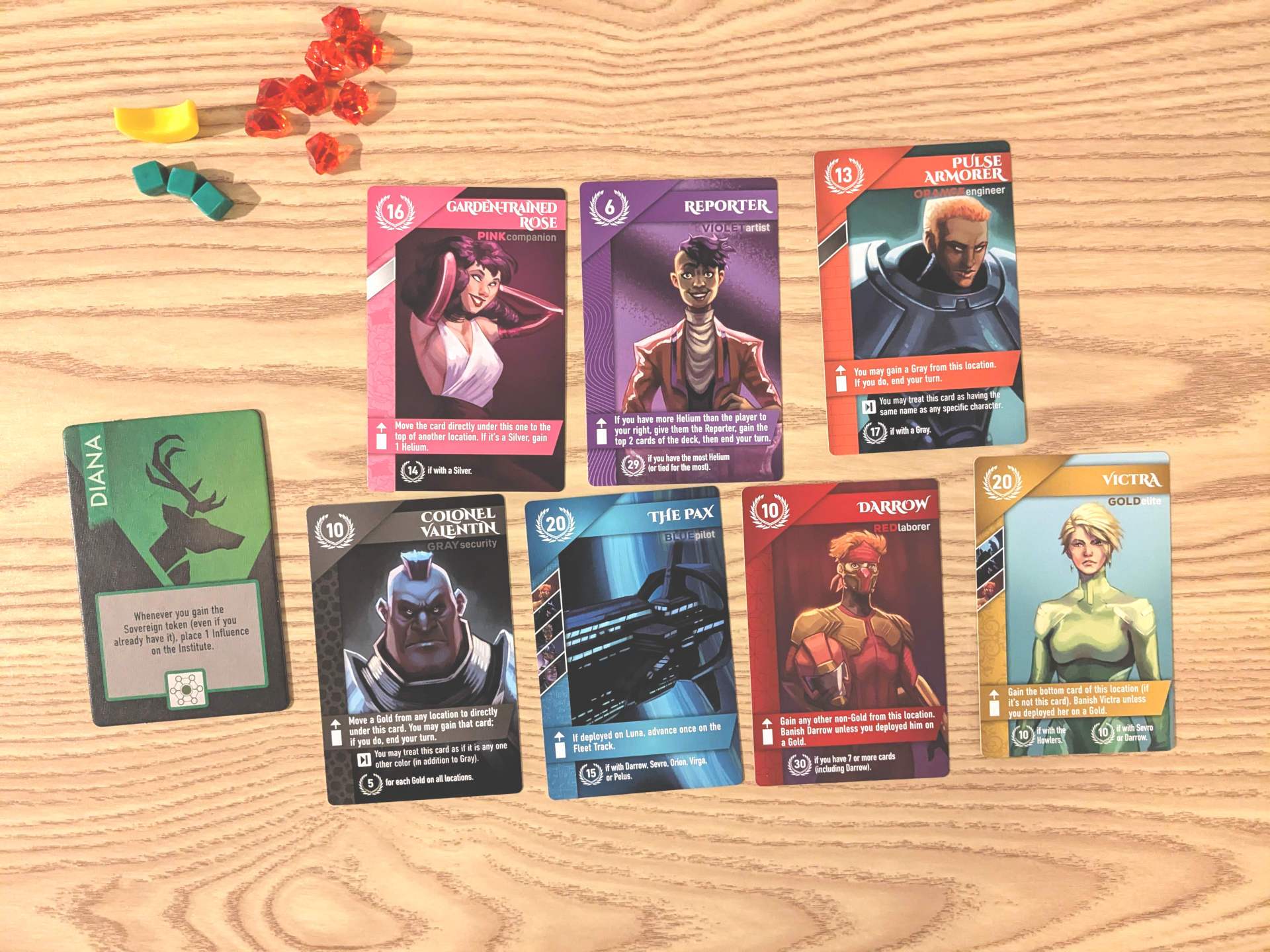
Red Rising innovates in three major ways that elevate it from filler status to a more fleshed-out strategy game:
- Card Locations & Stacks: Instead of discarding cards into one common tableau, you place them onto separate locations, each forming its own stack. Only the top card of each stack is available to draft, which might initially feel restrictive. In practice, however, this feels very much like the drafting in 7 Wonders Duel where gaining cards isn’t just about what you get, but what you may be making accessible to other players. This design also introduces an array of clever card interactions that let you rearrange or bury key characters, adding a multi-dimensional, almost Solitaire-like puzzle to every turn. Finally, the location you gain a card from also matters because each spot provides its own unique bonus. Altogether, these stacked locations transform a basic discard mechanic into a more strategic and satisfying experience.
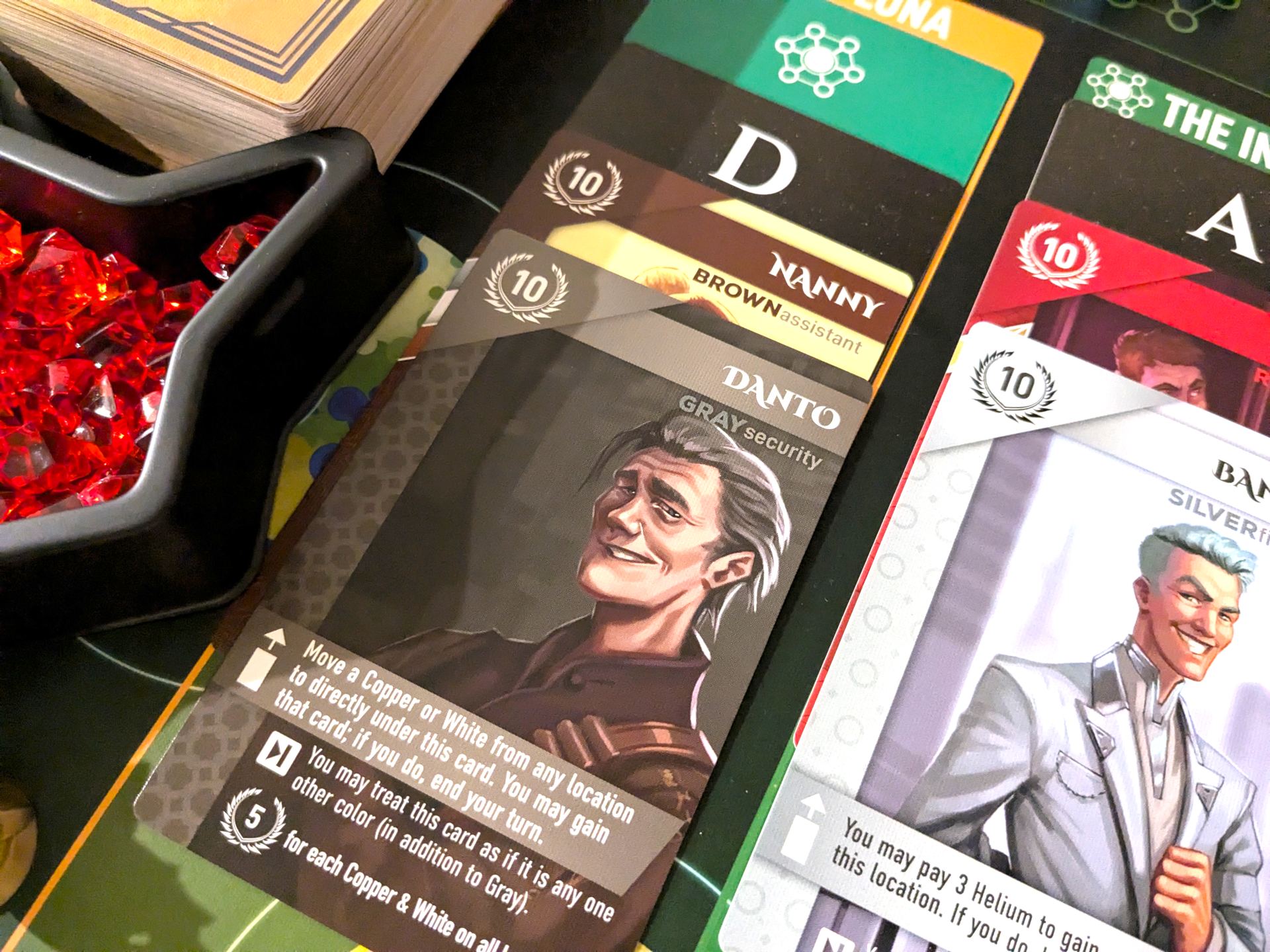
- Multiple Game-End Conditions: Red Rising introduces the three game end conditions which make the game feel like it is building up to a climax instead of just running out of time from exhausting a certain number of draws from a deck.
- Card Abilities: Card abilities can move and manipulate cards that are in play at the locations or score you points and accelerate the game ending conditions by gaining Helium, Influence, or Fleet Track progress. The card abilities give you a reason to gain a character card for some time that may not even contribute to your set collection, but has a useful ability. All the while, that character card may have been useful for someone else’s set or at the very least it can throw other players off your scent as to what sets you’re truly building towards.
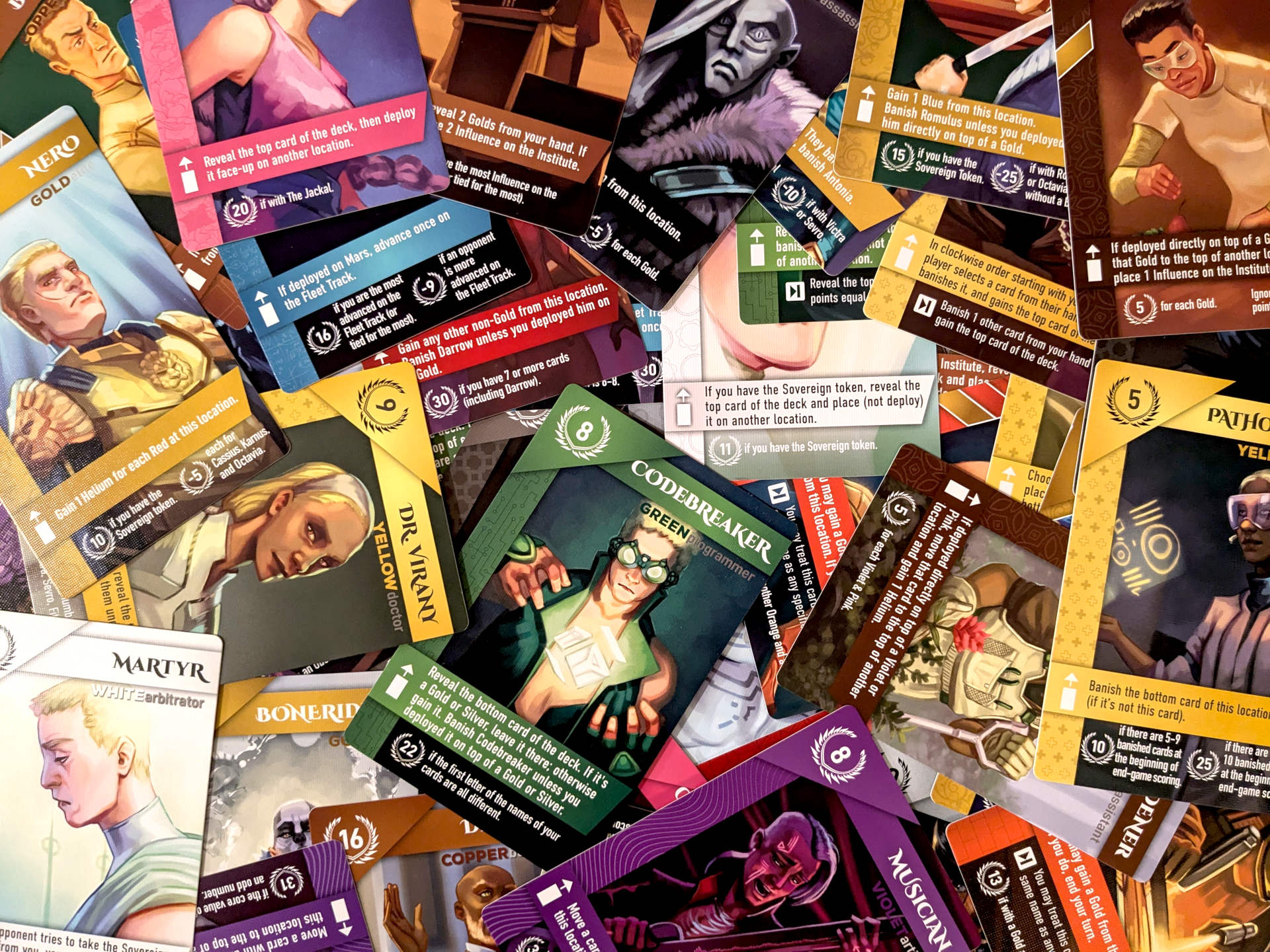
As you can tell, all of these innovations integrate well together and add more interaction, excitement, and delightful tension throughout the game without adding too much complexity.
Solo Play #
The solo mode for Red Rising uses an artificial player called Tull Au Toma, which allows a single player to simulate a two-player game. Tull Au Toma follows simpler rules than a human player, and ignores almost everything on character cards. The solo mode uses a deck of 22 Au Toma cards that decide the automa’s actions each turn.
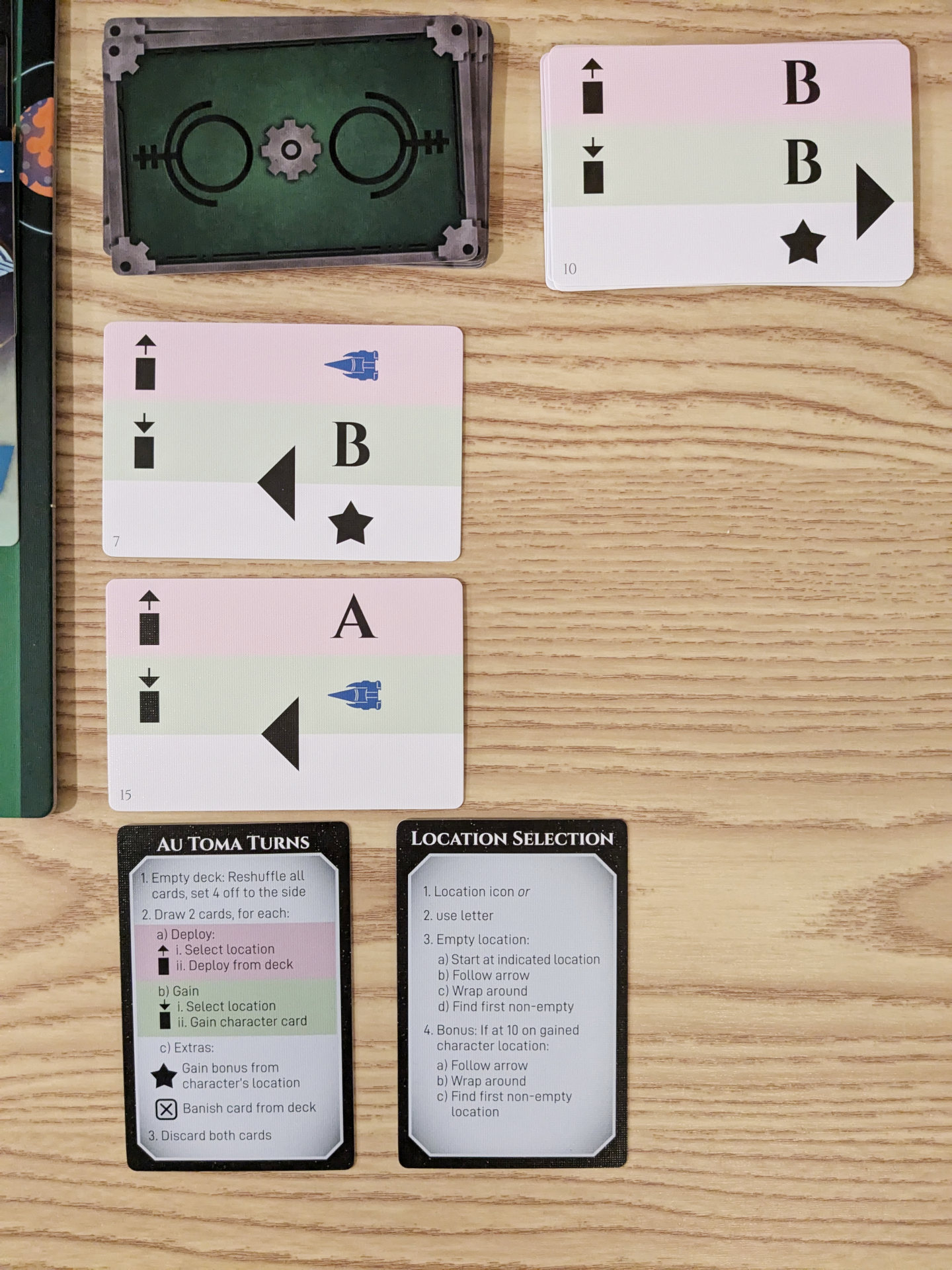
The automa has variable setups, so no two sessions are quite the same. Some matches it’ll accumulate Helium at a frightening pace; other times it focuses on Influence or stacking the Fleet Track. Even though you’re not facing a human, the decision space still feels interactive. You can bury cards to block the automa or force it to pick suboptimal ones. Its scoring mechanism is also well integrated, giving you the sense that your strategic choices matter.
Running the automa is straightforward, which is important for maintaining a smooth solo experience. You consult the automa card, follow a few quick steps, and you’re back to your turn. I appreciate how swiftly it moves, minimizing overhead while preserving the tension of a real opponent.
Red Rising’s automa offers a good challenge with six different difficulty settings.
Components and Design #
As a newcomer to the world of Red Rising, I wasn’t attached to any of the characters, but I intuitively started to grasp the caste system from the dystopian universe the game is based on by reading the character abilities and the professions of some of the generic characters in each color caste. I could glean alliances that exist between characters, castes that work well together, and castes that show their rivalries. It was enough of a premise to build my own narrative around it and enjoy the game. I didn’t plunge too deep into thought about the societal and institutional problems in Red Rising, but I did feel moments of tension reflecting on gold elites vs red laborers and even anxious at the thought of how well some gold elites, gray security, and obsidian assassins synergize.
Eventually, I read the first novel, and that elevated my enjoyment further. Suddenly, I found myself wanting to make certain strategies work because I wanted those characters in my hand out of pure attachment or curiosity about how to build a strategy around a particular character. Likewise, I felt my disdain for certain characters was also enhanced.
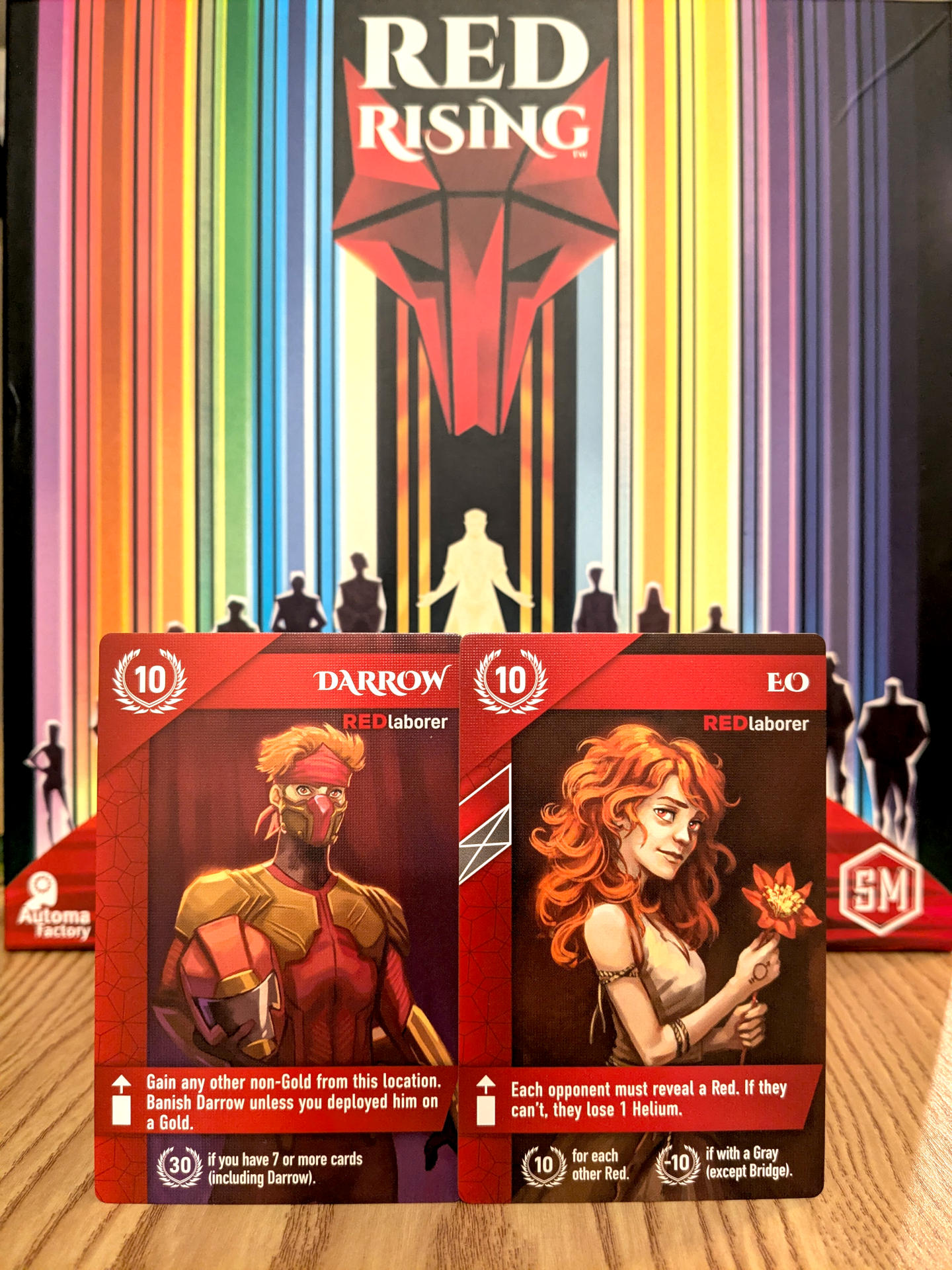
From a purely aesthetic angle, the design is clean. Each caste is distinct in color and iconography, so you can scan the board with relative ease. The automa deck feels more minimal and even prototype-like in appearance. It feels incomplete or out of place with the rest of the design, but it gets the job done.
The card art itself also very well done, but a bit cartoony and childish, which might not fit everyone’s mental image of a grim, dystopian world. The art features character portraits that are accurate to the descriptions of the characters, but I think the art could have done more to utilize actions, poses, and memorable scenes from the books that reveals more about the personalities of each character. Case in point, just compare the generic characters that are often performing actions in their cards versus the named characters. To the story’s disservice, the generic characters draw your attention more and pique your interest wondering why they are doing what they’re doing.
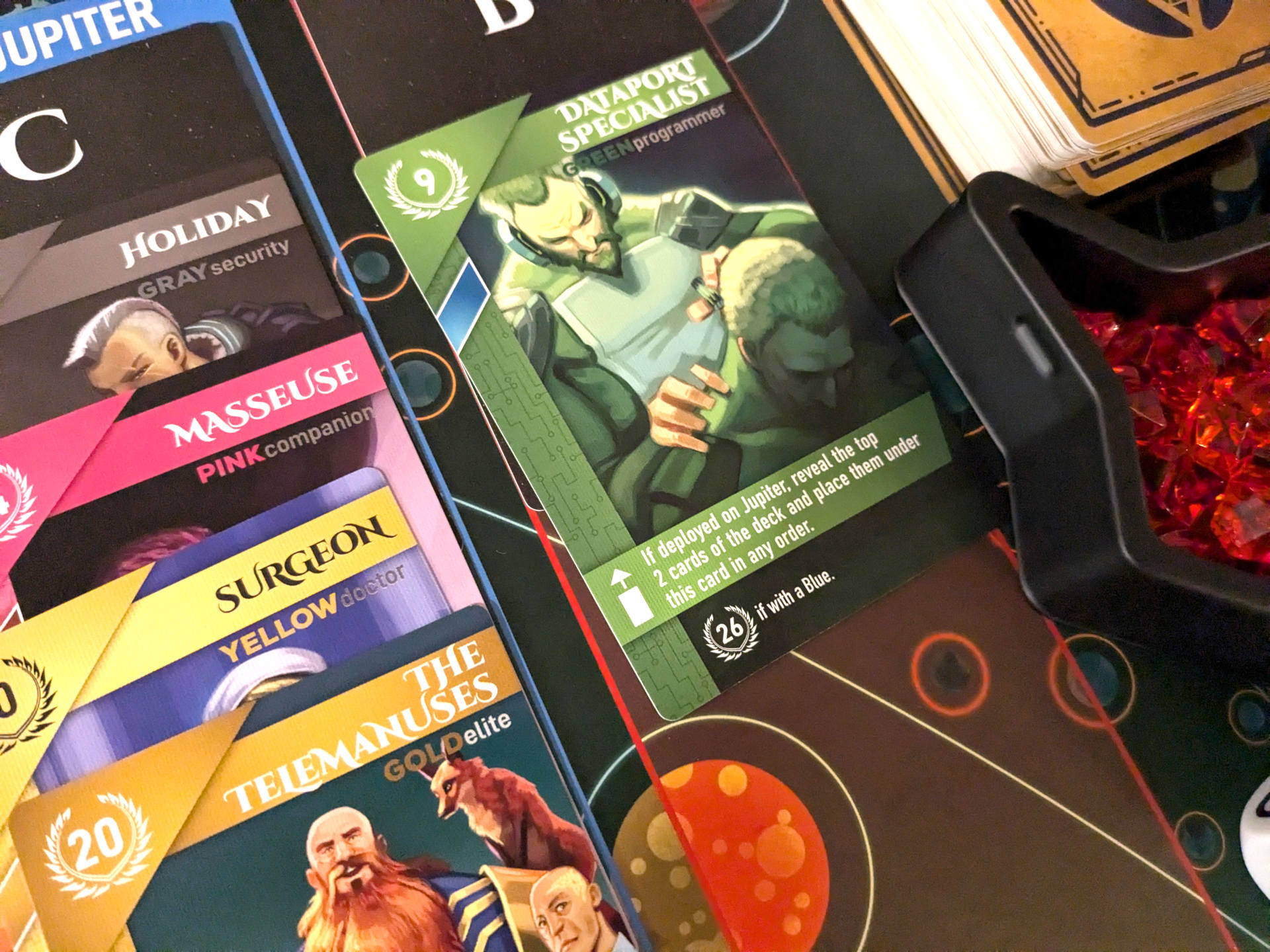
All of the components are all well-produced from the variety of plastic tokens to the custom game tray that holds the Helium tokens. Everything has its place on the game board and fits tightly.
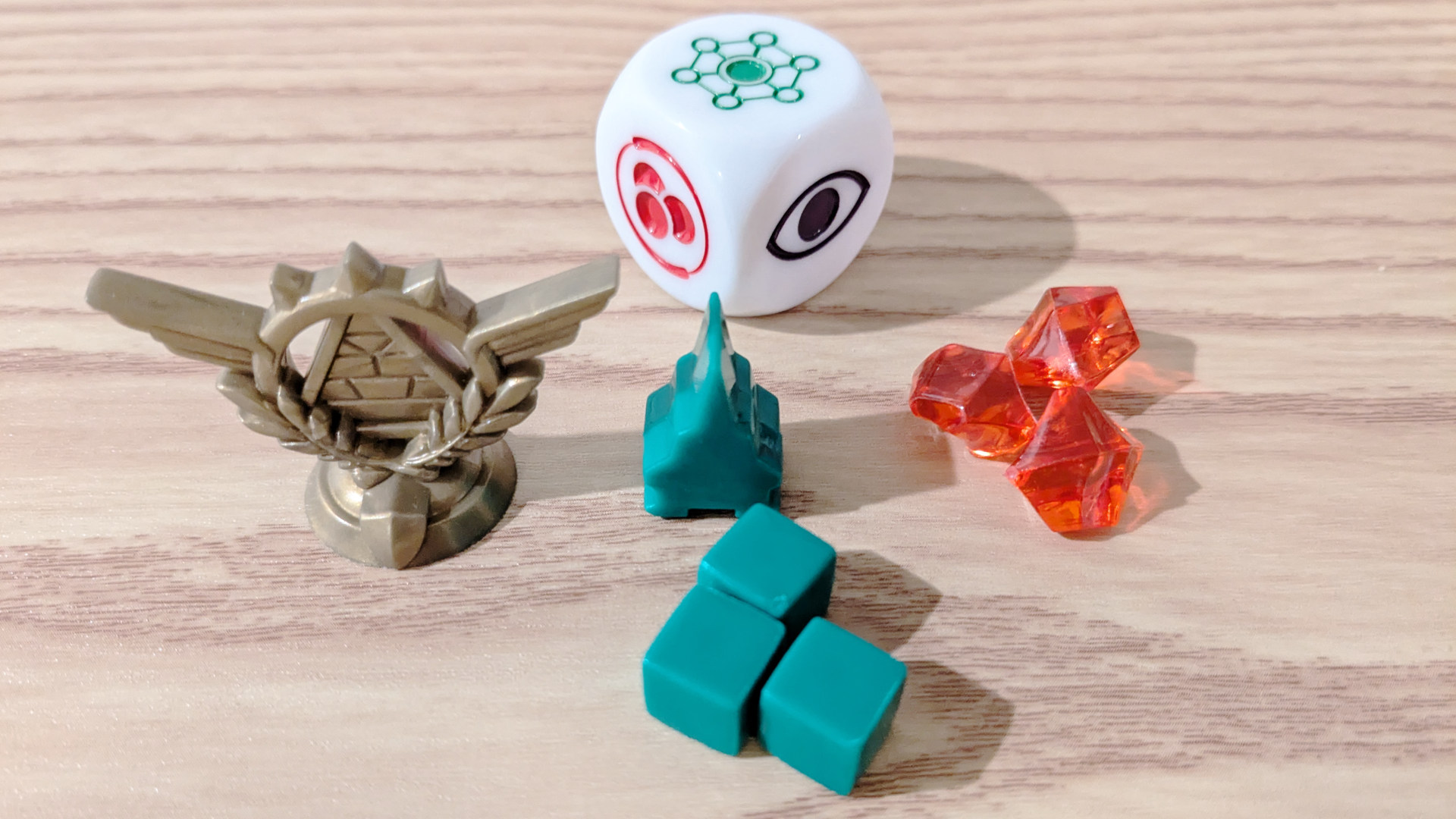
Overall, the theme meshes nicely with the gameplay. The characters and the castes from the Red Rising universe work very well for the wide range of combos and synergies that make a game like this so intriguing, dynamic, and replayable. Even if you’re not invested in the lore, it won’t hinder your enjoyment. But if you do decide to dive deeper into the books, you’ll likely find an extra layer of connection to the game.
Final Thoughts #
Red Rising successfully builds upon the Fantasy Realms design and broadens the concept with multiple endgame triggers, location-based card stacks, and varied character abilities. The result is a dynamic experience that feels both familiar and fresh. Solo gamers will appreciate the well-crafted automa that brings all of the excitement and tension to a table for one.
Whether or not you’re a devotee of the novels, Red Rising stands strong on the merits of its design. If you enjoy the thrill of powerful combos, the tension of open drafting, and a universe that invites you to explore deeper story elements, I’d happily recommend giving it a place in your collection. I know it’s earned a spot on my shelf, right beside my well-worn copy of Fantasy Realms.
We purchased this product independently. All opinions expressed are independent, honest, and unbiased.
- Innovates on top of the excellent Fantasy Realms rummy-like gameplay.
- Automa provides a smooth, challenging single-player experience with minimal upkeep.
- Even without reading the books, players get a sense of the Red Rising universe through the caste system and character abilities.
- Some players may find the slightly cartoony artwork at odds with the novel's darker, dystopian tone.
- The automa cards look more prototype-like and can feel inconsistent with the rest of the game's visuals.
Learn more about how we rate board games...
